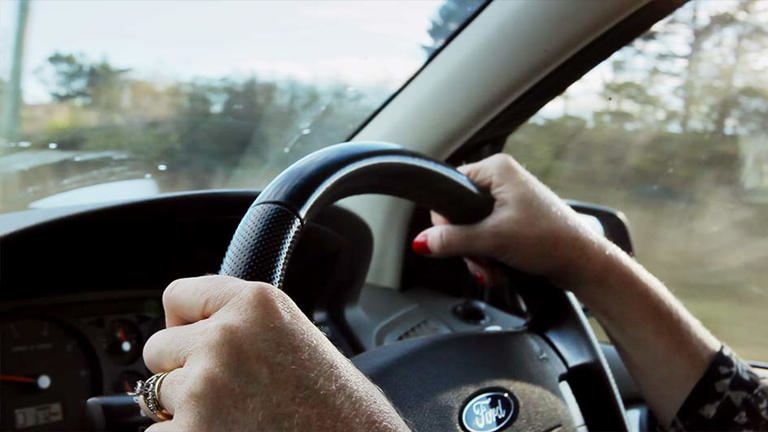Precious family heirlooms, cherished jewellery, expensive appliances, technology and a lifetime’s worth of belongings – it goes without saying that your home and its contents are among your most valuable assets.
It makes sense that you want to have the right protection in place, and this is where home and contents insurance comes into play, offering you that bit of extra confidence that your belongings should be covered if the unthinkable was to happen.
The fact is, we just never know when our home – and everything in it – might be subject to a natural disaster such as a storm or flood; to fire or burglary; or even to a broken window or sudden burst pipe.
While many insurance companies offer similar home and contents policies, there are some areas in which policies can, and often do, differ. If you’re not sure about the exact type of cover you need, it’s easy to make a mistake that could end up costing thousands of dollars in unnecessary out-of-pocket expenses in the event of needing to make a claim.
“When it comes to selecting the right policy and cover, you need to really consider your own situation,” advises Christopher Hope, Youi’s Head of Product – Home.
“It’s important to arm yourself with the right information and make a decision that best suits your personal circumstances.”
There’s no “one-size-fits-all” answer to the question of what type and how much coverage you need, but Hope says there are some common mistakes people make when choosing a policy.
What is home and contents insurance?
Before we get into the mistakes people make, it’s important to understand exactly what home and contents insurance is. Put simply, home and contents insurance can cover the cost of repairing or replacing your house and its contents in the case of an insurable event.
The Australian Government’s Money Smart website says home insurance covers the building itself and the fixtures (such as plumbing and built-in cabinetry), while contents insurance covers household items and personal belongings.1 This can be bundled as home and contents insurance.
If you’re renting, or own an apartment under a strata title, you generally only need contents insurance. The landlord or body corporate is usually responsible for insuring the building.1
Mistake 1: Underestimating the value of your home and contents
What would it actually cost to replace your home and contents should the worst ever happen? It’s a big question and one that takes time to answer accurately.
Too often, people determine the amount they should insure their home and contents for by making a quick estimate. This can leave you underinsured. A far better way is to use an online tool such as this free Sum Insured Calculator to help you estimate the cost of rebuilding your home.2
As for calculating the cost of replacing your contents, Hope recommends preparing a detailed household inventory checklist.
“You need to think about the cost if you had to replace everything new,” he says.
“You might think your stuff isn’t that valuable, but what if you had to replace it all at once because a fire destroyed your house? Going room by room and listing everything inside, and then adding up the value of all those items, can be a good start. This can be of great assistance when determining how much insurance cover you need.
“Most people normally allow for the big-ticket items but forget the small stuff and it’s often the little things such as toiletries, cleaning supplies and clothes that can really add up.”
Mistake 2: Not understanding what the policy covers
Before purchasing any insurance policy, it’s essential that you understand exactly what coverage it provides, as well as any limitations to that coverage and the items that are excluded from coverage.
Most insurers will summarise the coverage their building and contents insurance provides on their website, and it can be tempting to choose a policy based solely on this information.3 However, it’s wise to go one step further and take the time to read the Product Disclosure Statement (PDS) for any insurance product you’re considering.
The PDS contains all the information you need to know about the product, and understanding it will help you work out if it’s the right cover for you.4
Mistake 3: Neglecting to consider optional extras
Insurance companies are typically good at identifying the standard things that people need to be covered for by their home and contents insurance, but there are some types of coverage that many people don’t need or want.
For this reason, many home and contents insurance policies include a range of optional extras. Examples of these include:
- Accidental loss or damage to your contents
- Accidental building damage
- Insurance for items you have in commercial storage
- Insurance for any business items you may have in your home
- Insurance for accidental injury to your pets
Hope says the question of optional extras comes down to balancing better protection in the event of a claim against saving money on the premium.
“Would you rather pay the smaller amount (in the form of a premium) each year and be protected, or risk the larger amount at claim time?” he says.
Mistake 4: Not considering what claim limits apply
Most insurers will define and place a total value on the items you have covered. With home and contents insurance, this limit is typically called the ‘sum insured’, being the maximum amount you can claim in the event of a covered loss.
However, many insurers also place smaller limits on the maximum they will pay for individual items or specific benefits. This differs between insurers – some ask for high-value items to be noted individually with an amount attached, others will separate jewellery from contents, while others won’t require you to do so.
Understanding what claim limits apply to your policy will help you decide if you need to purchase optional additional cover for specific items or benefits. Be aware that, especially in building insurance policies, some limits might be expressed as a proportion of the sum insured.
Mistake 5: Failing to consider expensive and excluded items
Many standard home insurance policies won’t cover your expensive portable items including jewellery or camera equipment if you intend to wear or use them outside your home. Even those that do cover them may have a set limit they will pay per item.
You may therefore need to have these items expressly listed on your policy. While this is usually a simple process, be aware that this will likely increase the cost of your insurance.
Mistake 6: Purchasing a policy without flood cover
Major floods can and do happen. If you don’t have flood coverage, you may find yourself facing a significant financial loss if your property is damaged or destroyed by floodwaters.
While flood cover is included as standard by some home and contents insurers, including Youi,3 others may only offer it as an optional extra at considerable additional cost.
Mistake 7: Bending the truth or neglecting to mention something when asked
All insurers will ask you questions about your home and contents and your personal and insurance history before agreeing to offer you insurance. You must always answer these questions completely and honestly. Otherwise, your insurer may refuse to insure you or refuse to pay a claim.
Likewise, when it comes to making a claim, you must always be truthful about the cause and extent of the loss or damage to your property. Bending the truth or fraudulently inflating your claim may constitute a criminal offence, and your insurance company may refuse your claim.5 You may also find yourself facing criminal charges if the matter is reported to the police.6
Mistake 8: Failing to keep proof of ownership
It’s important to keep records of receipts, proofs of purchase and photographs of items such as jewellery, photographic equipment, expensive appliances and other valuable items that you keep in your house.
If ever you need to claim the loss or damage of these items, your insurance company may request proof that you owned them. Having these records on hand may make the claims process quicker and less stressful for you.
“You want to be able to easily show that the item existed, and how much it was worth, in the event of a claim,” says Hope.
“One option is to do a video walk around the house. In the event of a claim, that video can be referred back to for help with a list of items. Taking photos of receipts can be a good idea too, as receipts can fade or get lost.”
These records can also be useful in making police reports if your house is broken into and your items are stolen.
Mistake 9: Not keeping your insurance and personal details up to date
Just as it’s vital to ensure you have the right type of insurance, it’s also important that you update your coverage amount when the value of your home and contents increases.
Also, whenever your personal details change, take the time to provide this information to your insurance company. This will help if there’s an update, change or problem with your policy that they need to contact you about.
Mistake 10: Failing to compare insurance policies offered by different companies
When it comes to getting the best deal for your home and contents insurance, the most important thing you can do is compare insurance companies.
With a little research, there is every chance you’ll be able to find a better and less expensive home and contents insurance policy than the one you currently have.
And while we all hope that we never need to use our insurance, purchasing home and contents insurance is a necessity if you own your own home. But doing so needn’t be a hassle if you’re conscious of the mistakes to avoid.
Read more about Youi’s home insurance to start your quote today.3
1 Source: Australian Government moneysmart.gov.au – Choosing home insurance
2 Source: CoreLogic Cordell Sum Sure – Estimate the cost to rebuild your house
3 See our Home Insurance PDS for full details.
4 Source: Australian Government moneysmart.gov.au – Product disclosure statement
5 Source: Insurance Council of Australia – Insurance fraud
6 Source: NSW Police Force – Fraud and Scams



